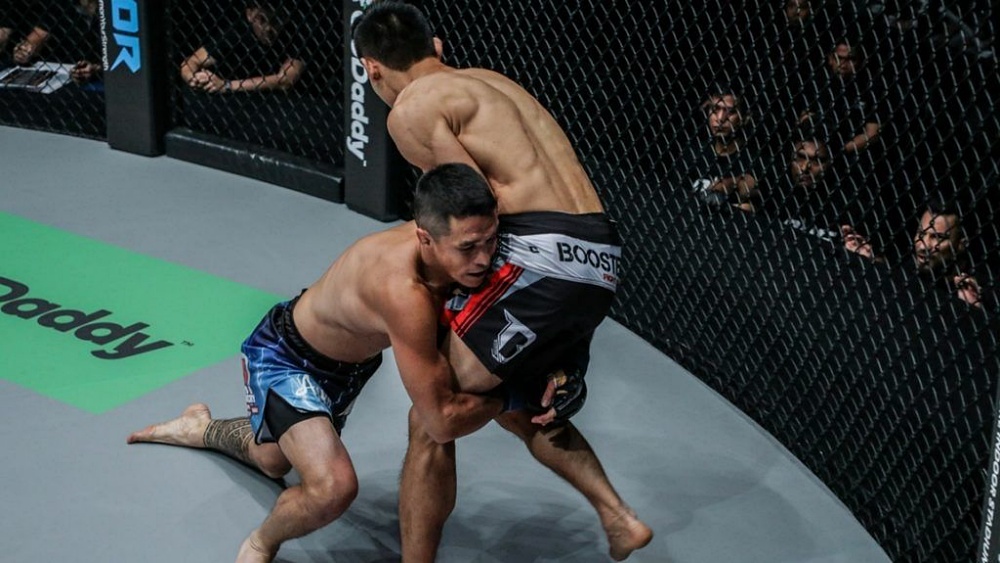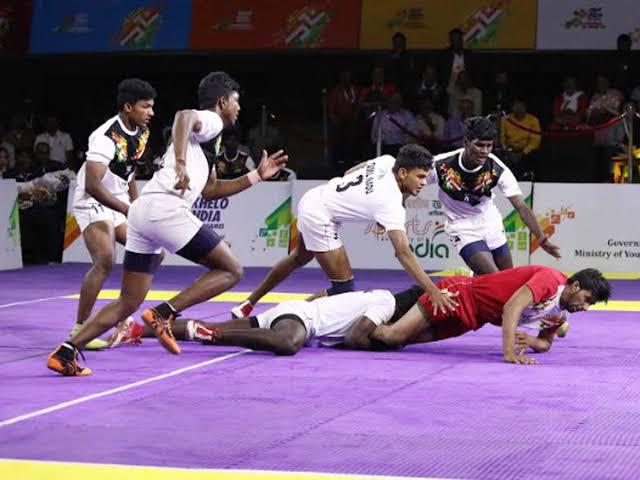
Summary
The penetration step is a fundamental wrestling movement used to close the distance and drive power into a takedown. It’s not just a forward step but a full-body motion that helps you shoot deep under your opponent’s center of gravity.
In simple terms, it’s how you enter for a takedown safely and efficiently. A proper penetration step helps you maintain balance, generate drive from your legs, and keep your posture strong while attacking.
Whether you’re training in mixed martial arts (MMA) or Brazilian Jiu-Jitsu (BJJ), the penetration step is one of those essential techniques that sets up a double-leg, single-leg, or body lock takedown.
It’s one of the first wrestling fundamentals every grappler learns, yet also one of the most misunderstood. Perfecting the penetration step can be the difference between a clean takedown and getting sprawled out by your opponent.
How To Perform A Penetration Step
Here’s a breakdown of the mechanics step by step:
- Start In Your Stance: Maintain a low, athletic stance with your knees bent and back straight.
- Step Forward With Your Lead Leg: This step should go between your opponent’s feet, not directly at them.
- Drop Your Level: Lower your hips, keeping your chest upright and your back flat. This keeps your power loaded and your posture safe.
- Knee Slides Forward: Your rear knee should touch or nearly touch the mat as your lead foot plants firmly.
- Drive Through: Push off your back foot, bringing it up to follow through while keeping your head up and chest forward.
This sequence ensures your body weight moves forward in a controlled, explosive way, the same motion that powers takedowns.
Using The Penetration Step In MMA
In MMA, the penetration step connects striking to grappling. A well-timed step lets you shoot under punches or kicks and transition straight into a takedown.
Fighters often hide their penetration step behind jabs or feints. This keeps the opponent guessing and prevents them from sprawling early.
The step also works with cage takedowns, where fighters use penetration to drive opponents backward before locking the legs.
Proper form protects your neck and keeps your head tight against your opponent’s body, minimizing exposure to uppercuts or knees.
Wrestlers like Anatoly Malykhin have proved the effectiveness of this technique, relying heavily on their mastery of this movement to control the fight and dictate where the action happens.
Using The Penetration Step In BJJ
While BJJ doesn’t always emphasize explosive wrestling entries, the penetration step remains key for stand-up grappling and takedown success.
In BJJ:
- The step helps with double-leg and single-leg setups, especially when competing under IBJJF rules.
- It’s useful for takedown feints, forcing your opponent to react and open guard-pulling opportunities.
- The movement is smoother and more controlled compared to MMA, think precision over power.
A clean penetration step in BJJ is about entering efficiently without losing balance or exposing your neck to guillotines.
Common Mistakes To Avoid
Even experienced grapplers make errors when shooting for takedowns. Here are the most common mistakes with the penetration step:
- Bending at the waist instead of the knees, which kills your power and leaves you open to counters.
- Stepping too far forward makes it hard to drive through or recover position.
- Keeping your head down reduces your leverage and opens guillotine threats.
- Not bringing your back leg through, resulting in stalled movement and weak finishes.
Frequently Asked Questions About Utilizing The Penetration Step
Q: What Is The Main Purpose Of The Penetration Step?
A: It allows you to close the distance safely and enter deep enough for an effective takedown. It sets the base for power, leverage, and control.
Q: How Is The Penetration Step Used Differently In MMA And BJJ?
A: In MMA, it is often paired with strikes or feints to disguise entries and avoid counters. In BJJ, it focuses more on precision and posture, minimizing openings for submissions.
Q: What Drills Help Improve The Penetration Step?
A: Shadow shots, knee slides, and stance-in-motion drills build muscle memory. Partner drills, where you focus on timing and level change, also help refine technique.
Q: Why Do Beginners Struggle With The Penetration Step?
A: Most beginners either bend at the waist or forget to bring the back leg through, which reduces drive and control. Proper body mechanics take time to develop.
Q: Can Shorter Fighters Benefit From The Penetration Step?
A: Absolutely. Shorter athletes often have an advantage because they naturally operate at a lower level, making it easier to enter under taller opponents’ defenses.
Q: What Should I Focus On To Improve Accuracy?
A: Work on level changes, foot placement, and balance recovery. Film your drills or practice in front of a mirror to ensure your spine stays straight and your hips stay under you.
Final Thoughts
The penetration step is more than a basic wrestling move; it’s the foundation of every effective takedown in MMA and BJJ. It teaches timing, balance, and commitment, all crucial traits for any grappler or fighter.
When executed with precision, it allows you to dictate pace and control the fight’s direction. Mastering it takes patience, but once it becomes second nature, it transforms your entire takedown game, turning simple entries into seamless, powerful transitions.
You may also like:
Understanding The Osoto Gari In BJJ
Summary Osoto Gari, meaning “major outer reap” in Japanese, is one of the most effective and widely used throws in grappling. Originally from Judo, it has become a staple in Brazilian Jiu-Jitsu because of its…
Summary Every Brazilian Jiu-Jitsu practitioner eventually finds themselves caught in an armbar. It’s one of the most common submissions in the art. While the best defense is prevention, knowing how to escape when it happens…
Summary In Brazilian Jiu-Jitsu, control always comes before submission. Before you can attack effectively, you must secure a stable position, and the seat belt is one of the best ways to achieve that. The seat…
Starting Brazilian Jiu-Jitsu is one of the most rewarding decisions you can make, but it all begins with picking the right gym. The place you choose will shape not just your technical progress, but also…
Opening the closed guard is one of the most fundamental and often frustrating skills for beginners in Brazilian Jiu-Jitsu. If you’re stuck inside someone’s guard, your movements and offense strategies are completely limited. This article…
Brazilian Jiu-Jitsu, often called BJJ, is filled with techniques that allow a smaller or less powerful practitioner to reverse positions and gain control. Among the most iconic is the flower sweep. For students of all…
Summary In Boxing, the beauty of outboxing lies in its precision and adaptability. It’s the art of dictating distance, tempo, and rhythm while forcing your opponent to fight your fight. But mastering outboxing goes beyond…
Summary Over the last few years, a remarkable shift has been happening in the world of television and fitness. Reality competition shows built around extreme physical challenges are no longer niche, they’re becoming mass-market phenomena….
Summary In today’s world, rest often feels like a luxury. Between work, personal commitments, and social expectations, many people find themselves running on autopilot. Over time, this leads to burnout; a state of emotional exhaustion,…
Summary The clinch is one of the most dominant positions in Muay Thai, and knowing how to sweep from it can completely change the flow of a fight. A clinch sweep allows you to off-balance…
Summary Footwork is one of the most important yet overlooked aspects of boxing. It determines balance, defense, and the ability to create openings. Two common types of movement used by boxers are parallel and diagonal…
Summary In boxing, stance shapes strategy. Southpaw fighters, those who lead with their right hand and right foot, often appear awkward to their orthodox opponents. Because most boxers are orthodox, the southpaw stance instantly changes…


![[WATCH] IND vs SA 2025: Umpire Rohan Pandit down in pain as Sanju Samson drive hits knee](https://www.babu88sports.com/wp-content/uploads/2025/12/watch-ind-vs-sa-2025-umpire-rohan-pandit-down-in-pain-as-sanju-samson-drive-hits-knee-360x180.jpg)






























![[WATCH] IND vs SA 2025: Umpire Rohan Pandit down in pain as Sanju Samson drive hits knee](https://www.babu88sports.com/wp-content/uploads/2025/12/watch-ind-vs-sa-2025-umpire-rohan-pandit-down-in-pain-as-sanju-samson-drive-hits-knee-120x86.jpg)



![[WATCH] IND vs SA 2025: Umpire Rohan Pandit down in pain as Sanju Samson drive hits knee](https://www.babu88sports.com/wp-content/uploads/2025/12/watch-ind-vs-sa-2025-umpire-rohan-pandit-down-in-pain-as-sanju-samson-drive-hits-knee-350x250.jpg)
